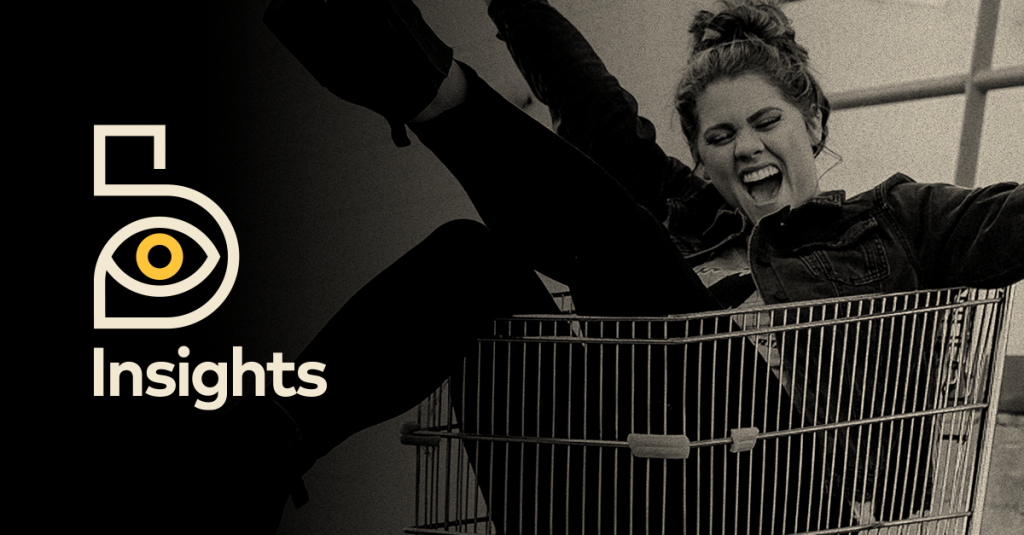
Pew Research classified people born between 1997 and 2012 as members of Generation Z. Some definitions of this generation vary by a year or two, but this one appears common. Mostly, marketers have only begun to consider the distinct values and buying habits of these young people, and some still lump them in with Millennials.
Of course, it also seems like marketers only clarified the retail marketing differences needed to satisfy Millennial, Gen X, and Baby Boomer shopping habits fairly recently. Perhaps that’s not surprising because just five years ago, Millennials surpassed Boomers as the largest population in the workforce.
Still, many members of Gen Z already have jobs, credit cards, influence, and their own strong preferences as consumers. In order for a DTC marketing agency to attract the attention, good will, and business of these 67 million young Americans, they need to study what these teens and young adults care about and how they like to shop.
Retail marketing must communicate shared values with Gen Z
Experiences formed common attitudes that members of the younger generation share. For instance:
- Gen Z was born and raised in the shadow of 9/11, The Great Recession, the exponential increase in billionaire wealth vs. worker pay, climate change, the student loan crisis, and most recently, the coronavirus pandemic.
- They’re digital natives, ethnically diverse, and understandably somewhat mistrustful of big business and authority.
Perhaps because of these experiences and outlooks, they try to use their pocketbooks and influence to support companies they approve of.
Nicholas Kristof, a New York Times columnist, observed his own Baby Boomer generation could satisfy their social responsibility commitments by making a few charitable donations each year. He added that Gen Z wants to do business with companies that incorporate social responsibility into every aspect of their business. Younger people want to buy from companies that take good care of their communities, customers, suppliers, and employees, besides contribute to the greater good.

Gen Z appreciates pre-worn fashion
Just as Gen Z prefers companies that build social responsibility into their business model, they envision entire economies operating the same way. As an example, the idea of a circular economy inspires young people.
This means focusing upon reusing and recycling products to reduce waste and reduce costs. They care about sustainability to help the environment but also hope to maximize value.
Some examples of online apps that help people participate in this kind of circular economy include Poshmark and Depop. The apps allow users to buy and sell pre-owned items. This gives participants a chance to save or earn money, plus prioritize reuse over discarding products.

Gen Z members enjoy in-store shopping experiences
Sure, most people grew up as digital natives. At the same time, they’re not immune to great in-store shopping experiences. According to survey results published by Marketing Dive:
- About 80 percent enjoy shopping at stores when they have time.
- At the same time, 75 percent admit to mostly shopping online for convenience.
Like members of older generations, they may research important shopping choices online. They will still visit a store for an in-person examination of products and a chance to connect with people behind the brand before making a final purchase.
Very often, marketers mention Lush as a brand that works hard to create an engaging onsite experience while integrating digital experiences with physical stores.
Customers get a chance to try out products and speak with helpful salespeople inside the store. As another example, customers can use Lush Lens to take photos of products in order to retrieve a list of ingredients.
This suggests that sellers with physical items for sale should work to make the experience worth the extra time to attract more foot traffic from Gen Z. Retailers should also strive to integrate in-store and online shopping as much as possible. Sellers without physical locations may need to work harder to maintain trust with actions like great customer service and a generous return policy.

Retail packaging for Gen Z
According to research from the National Retail Foundation, brands that demonstrate authenticity, sustainability, and a bit of fun attract members of Gen Z. While these values matter a lot to younger shoppers, they also say that their brand perceptions begin with packaging.
An obvious example includes sustainable retail packaging that’s also distinctive enough to stand out on store shelves or social media posts. Go People highlighted compostable paper bottles for personal care products.
They stand up to showers with a thin lining made up of recycled plastic. Even so, they use 95-percent less plastic than typical bottles. Even better, the containers collapse as they empty, so it’s easy for people to get the last drop of product out of them. At first glance, they look like traditional bottles for high-quality boutique personal care products.

The Importance of Social Media for Connecting With Gen Z
Any retail marketing agency should emphasise the importance of using social media to connect with Gen Z. As one example, the National Retail Foundation found that almost three out of four Gen Z college students purchased products they first found on social media.
Even more than typical ads and posts, social media will help leverage input from brand devotees and influencers, who will share posts from companies and their own experiences on their feeds. In fact, almost 30 percent of the Gen Z respondents to the NRF survey admitted high enthusiasm over certain brands.
This kind of word-of-mouth advertising from true brand admirers provides an authentic recommendation that attracts other members of their social circle.
Why retail marketing should focus on Gen Z
According to McKinsey Research, Gen Z hasn’t peaked in buying power yet. That might not occur for ten to 15 more years. Smart retailer marketing should not ignore this group, just because they haven’t entirely blossomed yet.
More than making their own direct purchases, adolescents, teens, and young adults influence the buying choices of their Millennial, Gen X, and Baby Boomer elders. Of course, younger members of this generation still rely on their families for most purchases, so they express opinions to satisfy their own preferences. They’re also active on social media and can influence a diverse social circle online.
A focus on Gen Z can help improve current sales and future-proof marketing strategies for the next several decades.
Download Bigeye’s research report Retail Disrupted: What Shoppers Want From Brands Today to discover how consumers make purchase decisions.




